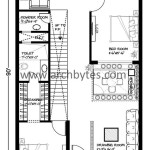House Fire Evacuation Plan Template: Ensuring Safety and Preparedness
A house fire is a potentially devastating event. Implementing a well-defined and practiced fire evacuation plan is crucial for ensuring the safety of all occupants. This article provides a comprehensive guide and template for creating an effective fire evacuation plan for a residential property.
Developing a personalized plan is essential because every home has a unique layout, different occupants with varying abilities, and distinct potential fire hazards. A generic plan will likely be insufficient to address the specific needs and challenges of a particular household.
Key Point 1: Mapping Exit Routes and Meeting Points
The foundation of any fire evacuation plan is a clear and easily understood map of the home, highlighting all potential exit routes. This map should be readily accessible to all residents, preferably posted in a central location such as the kitchen or hallway. Children should be actively involved in understanding the map and the exit routes.
Begin by drawing a basic floor plan of the house, including all rooms, hallways, doors, and windows. Identify at least two escape routes from each room, if possible. Windows should be assessed for ease of opening and potential obstructions. If windows are the only escape route from upper floors, consider purchasing escape ladders and practicing their use.
Mark each escape route with a distinct color or symbol on the map. Clearly indicate the location of smoke detectors and fire extinguishers. The placement of these safety devices should be strategically chosen to maximize their effectiveness. Smoke detectors should be installed on every level of the home and outside each sleeping area. Fire extinguishers should be located in high-risk areas such as the kitchen and garage.
Designate a meeting point outside the house. This location should be a safe distance from the building and easily identifiable. Examples include a neighbor's mailbox, a specific tree, or a designated spot across the street. This meeting point ensures that all occupants can be accounted for after evacuation.
Practice walking the escape routes with all members of the household. This practice should be conducted during both daylight and nighttime hours to simulate realistic fire conditions. Emphasize the importance of staying low to the ground to avoid smoke inhalation.
Regularly review and update the evacuation plan as needed. Changes to the house layout, new occupants, or the installation of new appliances may necessitate modifications to the plan. A schedule for reviewing the plan, such as annually or after any significant home alteration, should be established.
Key Point 2: Assigning Roles and Responsibilities
A well-coordinated evacuation requires assigning specific roles and responsibilities to different members of the household. This division of labor ensures that critical tasks are completed efficiently and effectively during an emergency.
One individual should be designated as the primary evacuator for young children or individuals with mobility impairments. This person is responsible for ensuring their safe evacuation, potentially requiring assistance with mobility aids or physical carrying. The primary evacuator must be physically capable of performing this task and should be thoroughly familiar with the needs of the individual they are assisting.
Another individual should be assigned the responsibility of calling emergency services (911) from a safe location outside the house. This person should be familiar with the home address and the location of the fire. They should provide clear and concise information to the dispatcher, including the nature of the fire, the number of occupants, and any known hazards.
If time permits and it is safe to do so, another individual can be assigned the task of shutting off the gas and electricity to the house. This action can help prevent further damage and potential explosions. However, this task should only be performed if it does not delay evacuation or put the individual at unnecessary risk.
Pet owners should designate someone to be responsible for the safe evacuation of their pets. This may involve securing pets in carriers or leashes and ensuring they are safely transported to the designated meeting point. It is crucial to account for the pets' safety during the evacuation process.
Each individual should be aware of their assigned role and should practice their responsibilities during evacuation drills. This ensures they are prepared to act quickly and effectively in the event of a real fire. The roles should be rotated periodically to ensure that multiple individuals are capable of performing each task.
Key Point 3: Practicing Fire Drills and Maintaining Equipment
Simply having a fire evacuation plan is not sufficient. Regular fire drills are essential to reinforce the plan and ensure that all occupants are familiar with the procedures. Additionally, maintaining fire safety equipment is crucial for its proper functioning during an emergency.
Conduct fire drills at least twice a year, simulating both daytime and nighttime scenarios. During the drills, activate the smoke detectors to alert occupants and initiate the evacuation process. Encourage occupants to practice staying low to the ground and covering their mouths and noses with a cloth to filter smoke.
Time the evacuation to assess its efficiency. Identify any bottlenecks or areas for improvement. Discuss the drill afterward with all occupants, soliciting feedback and addressing any concerns. Use the drill as an opportunity to reinforce the importance of fire safety and the need for preparedness.
Regularly test smoke detectors to ensure they are functioning properly. Replace batteries at least once a year, or more frequently if needed. Consider using smoke detectors with a ten-year sealed battery to reduce maintenance requirements. Replace smoke detectors every ten years, as their sensitivity can degrade over time.
Inspect fire extinguishers periodically to ensure they are fully charged and in good working order. Recharge or replace fire extinguishers as needed. Ensure that all occupants know how to use a fire extinguisher using the PASS method (Pull, Aim, Squeeze, Sweep).
Maintain clear access to escape routes. Remove any clutter or obstructions that could impede evacuation. Ensure that doors and windows can be easily opened. Regularly inspect escape ladders to ensure they are in good condition and readily accessible.
Consider installing a home fire sprinkler system. While this requires a significant investment, it can significantly reduce the risk of fire damage and increase the chances of survival. A fire sprinkler system can suppress a fire in its early stages, allowing occupants more time to evacuate safely.
Educate children about fire safety. Teach them the importance of not playing with matches or lighters. Explain the dangers of fire and the proper procedures for reporting a fire. Conduct age-appropriate activities to reinforce fire safety concepts.
Store flammable materials safely. Keep gasoline, propane, and other flammable liquids in approved containers and away from sources of ignition. Properly dispose of oily rags and other materials that can spontaneously combust.
Maintain electrical systems in good working order. Have electrical wiring inspected regularly by a qualified electrician. Avoid overloading electrical outlets and extension cords. Replace damaged or frayed electrical cords immediately.
By following these guidelines and using a house fire evacuation plan template, homeowners can significantly improve their preparedness for a fire emergency and increase the safety of their families.
This comprehensive approach focuses on proactive measures, regular practice, and continuous maintenance to create a safer living environment.

Fire Escape Plans Ontario Association Of Chiefs

How To Create A Fire Evacuation Plan Travelers Insurance

8 Home Evacuation Plan Templates Ms Word

Fire Escape Plan Templates For Printing Maker

Home Escape Planning City Of Richmond Hill

8 Home Evacuation Plan Templates Ms Word

Evacuation Floor Plan Template Unique 12 Home Fire Ierde Emergency

Home Fire And Emergency Plan Edrawmax Free Editable Template Evacuation How To

Home Escape Plan Township Of Scugog

8 Home Evacuation Plan Templates Ms Word








